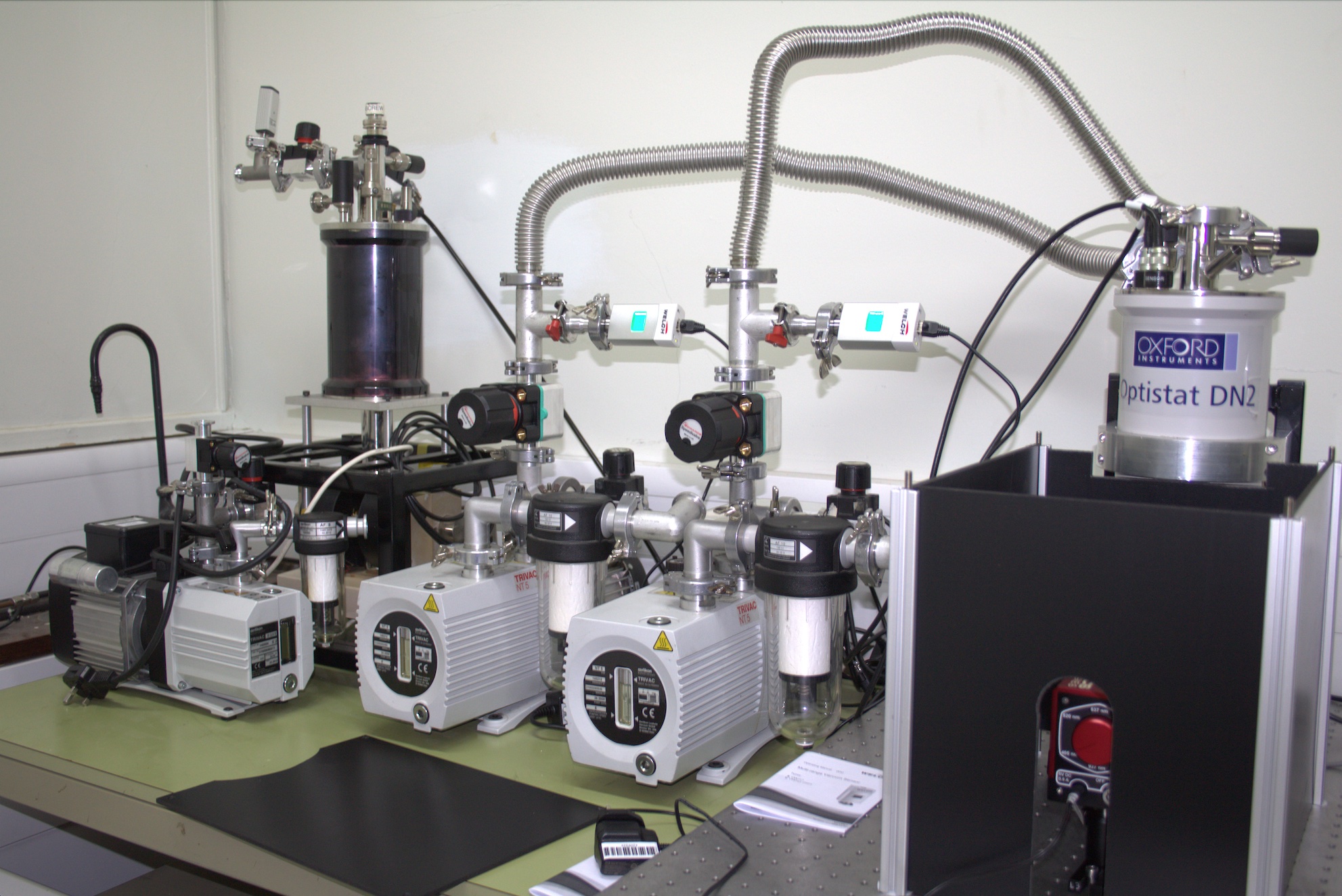Condensed Matter Physics

Overview
Condensed Matter Physics underpins almost every aspect of our lives, from electronics (including the computer and screen this web page is being displayed on!) through advanced materials to biological systems. In addition to a myriad of 'real world' applications, condensed matter physics enables us to study fundamental physics such as quantum behaviour and emergent phenomena through laboratory-scale experiments. In this laboratory there are a range of projects which demonstrate some of the breadth of this area of physics including the opportunity to make your own high temperature superconductors, optically probe the basic electronic structure of solids and measure phase transitions at low temperatures.
Students in previous years have, for example, determined the sizes of the magnetic particles in a ferrofluid (which are of the order of a few tens of nanometres) by examining the magnetic properties of a macroscopic sample or tried to maximise the critical temperature of superconducting samples using approaches they have found in the literature. As a result, each project will be different even if they share the same starting point. However, there are some generic skills the laboratory aims to develop, in addition to specialist skills associated with your project:
- To design, plan, manage and execute a particular project around the available equipment.
- To learn and employ skills in computing, electronics, etc.
- To reduce and analysis the numerical data gathered, with emphasis on finding the uncertainty of the final results.
- To understand the wider significance of your data and convey this in a scientific report.
- To consider the science behind the field and extend the project beyond its original brief.
All the experiments in the Condensed Matter Physics Laboratory have some element of computer control, which enables long measurements (for example, overnight) to be performed and provides an opportunity to develop the project/analyse results whilst data is acquired. In fact, it is strongly recommended that you analyse data 'in real time' to make the most intelligent choices about what to do next. Automation of experiments is achieved by using industry standard software (LABVIEW) which provides a straightforward, graphical method of communicating with a wide range of equipment including multimeters, lock-in amplifiers, oscilloscopes, temperature probes etc.
Projects
- Although the projects are updated regularly, examples of previous projects have included:
- Absorption and Fluorescence of Ruby
- Optical Properties of Semiconductors
- Superconductive Anisotropy
- Superconductor Fabrication
- Vibrating Sample Magnetometer
- Current students can find more information on Learn Ultra.


/prod01/prodbucket01/media/durham-university/departments-/physics/teaching-labs/VT2A9034-1998X733.jpeg)